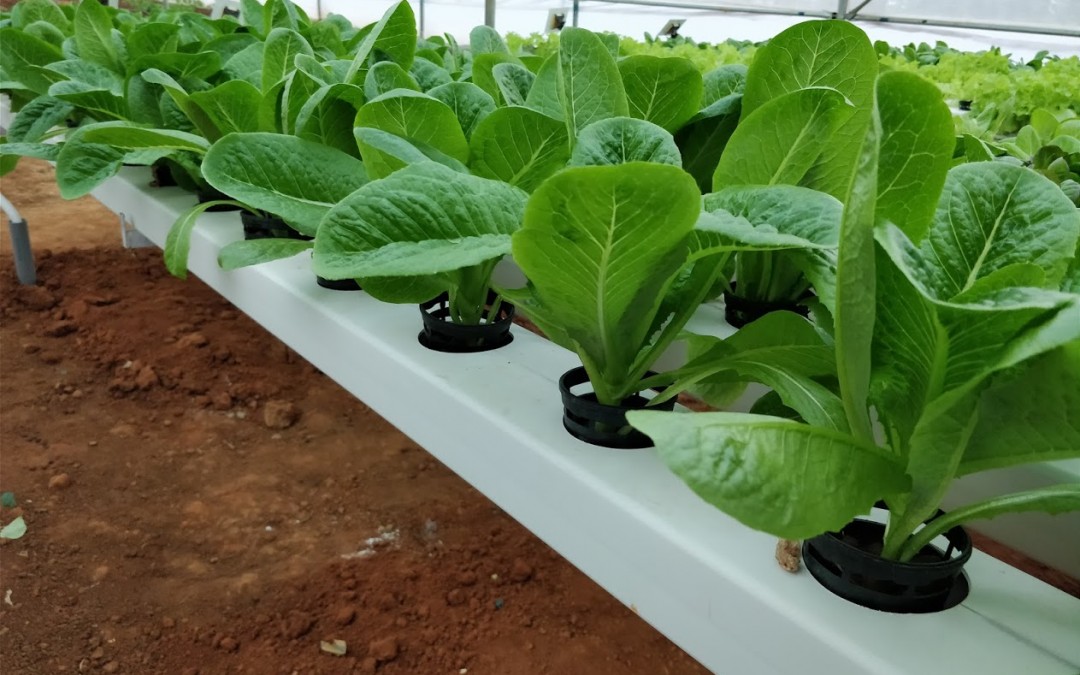Soil-Less Agriculture: An Overview of Hydroponic Farming
For appropriate growth, plants Need a trusted medium that will be responsible for catching and keeping the vital plant nutrients. In conventional agriculture, this function is performed by dirt. On the other hand, the rapid evolution of hydroponic farming during the past few decades or so has somewhat diminished the significance of land in agriculture together with 'soil-less farming' getting a very real chance.

What's Hydroponics All About?
Essentially, Hydroponic Farming in India is about developing plants and plants without soil. Inside this technique, plant roots have been brought directly connected to the liquid (normally, plain water) nutrient alternatives ensuring healthy expansion. The nutrients are reused or emptied off, as necessary. As there's absolutely no soil involved, the evolution of big root programs (to draw nutrients) isn't mandatory and normally, the consumption of nutrients from the fibrous roots of hydroponically-grown plants is quite effective (minimal wastage). In hydroponics, the soil is substituted by means of a reservoir or a medium made from a different substance that absorbs the crucial nutrients in the water-based alternative.
What Materials Can Be Used As ‘Growing Medium’ In Hydroponics’?
Several different materials may be employed to produce the nutrient-absorbing moderate (in nature, the replacement of dirt ). Based upon the exact requirements of plants and, needless to say, the farmer substances such as lavender, hydro corn, expanded shale and coco peat are utilized for the objective. To be usable as the medium for hydroponic plant development, the substance needs to be sterile -- and make sure that the plants have ready access into this liquid nutrient solution, oxygen, light and other crucial enzymes (mixed together with the nutrient solution).
They are into Aquaculture in India: AS Agri & Aqua uses the Latest technology in fish farming and prawns farming. To get a good return for investment.
There are very small Doubts about that. Typically, the growth rate of a plant is near 40% greater in a hydroponic installation compared to the classic soil-based farming procedure. The yearly harvest yields can be as much as 75 percent more making hydroponics a fantastic method for large scale, commercial crop-growers (specifically ). Unlike dirt farming, there's not any lack of nutrients plant expansion that occurs in a controlled, efficient atmosphere. Since hydroponic farming is less labor-intensive than dirt farming, access to manual funds isn't much of a problem.
Kinds Of Hydroponic Systems
There are several Alternative hydroponic system hinges which farmers may elect for based on the precise demands of these plants/crops they want to grow.
The 'Water Staff' (also called' Deep Water Infection') is most likely the easiest method, involving cautious suspension of their plant roots at the water-based nutrient solution. Growers have to make sure that light doesn't become a direct entrance in the computer system.
All You Need to Know About Vertical farming in India is the practice of growing produce in vertically stacked layers. The practice can use soil, hydroponic or aeroponic growing methods.
Conclusion
The hydroponic plants also have Grown considerably taller and produced more leaves faster compared to plants growing in Ordinary soil. As a result of This, the null Theory is rejected, because the information does not support its own reasoning. The usage Of fertilizer at a standard rate during the day helped the crops to grow at A controlled and stable rate.
Also, Learn About What's Hydroponics and Types Of Hydroponic Systems

Comments
Post a Comment